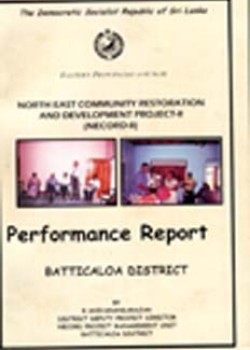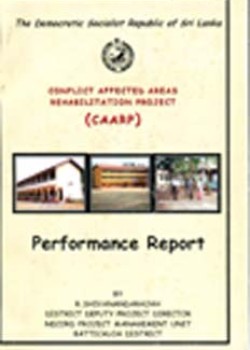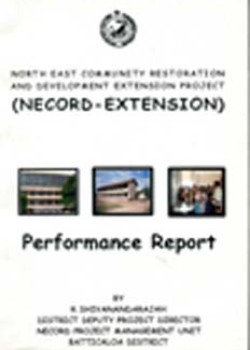
Disability amongst the Elderly in Sri Lanka
Comparisons of Disability Rates in the Censuses of 1981 and 2001
Author : De Silva, W.I. and Amarabandu, W.P. et al.
Publisher: Institute for Health Policy
Place of Publish: Sri Lanka, Colombo
Year: 2008
Page Numbers: 30
Acc. No: 3161
Class No: 362.4 DES-SL
Category: Books & Reports
Subjects: Social Problems and Services
Type of Resource: Monograph
Languages: English
ISBN: 978-955-1707-01-9
The incidence of disability in Sri Lanka has been increasing during the period 1981 to 2001 due to the process of population ageing and the civil strife that the country has experienced during that period and it is likely that the disability rates would continue to increase in the future. Thus, the objectives of this study on disability of elderly (50 years and over) are to examine the recent trends in age-sex specific disability rates, possible determinants of the change in rates, and also the spatial variations of the prevalence of disability. The 1981 and 2001 census data on disability were used to analyse disabilities in seeing, hearing and speaking as well in hands and legs. Disability rates have increased dramatically among the elderly primarily due to exogenous factors, while the disabilities at birth declined significantly due to the change in endogenous factors, particularly with the improvement and expansion of maternal health services. The author also points out that environmental factors such as noise and air pollution, largely through urbanization, and also behavioural changes leading to change in dietary patterns, including heavy consumption of liquor and tobacco, have led to higher level of disabilities through higher incidence of non-communicable diseases, such as diabetes and pre-vascular disorders. Apart from occupational injuries, violence and civil war casualties would have also contributed to the increase in disabilities. Finally, it is not only incidence of disability that has increased significantly over the intercensal period, but the spatial variations of disability as well.



